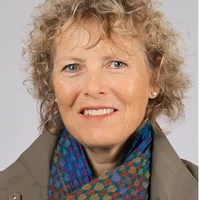Scope of project
Measurements of EC and OC and their fossil/non-fossil fractions including the main ions at several sites in Switzerland for winter samples with high concentrations, for the winters of 2006/2007 to 2011/2012.
Campaign details
- Filter sampling from 2007/2008 – 2011/2012 at 10 stations north (Massongex, Payerne, Solothurn, Basel St. Johann, Sissach, Reiden, Zürich Kaserne, St. Gallen, Vaduz, Bern) and 5 stations south (San Vittore, Moleno, Magadino, Chiasso, Roveredo) of the Alps in Switzerland
- 5 PM10 filters per winter and station from days with high concentrations (PM10 > 50 μg/m3) and 1 yearly cycle (August 2008-July 2009; 2-3 filters per month) for Zürich were selected for the analysis of EC/OC, major water soluble ions, 14C in OC and 14C in EC and levoglucosan
- Campaigns abroad: Aethalometer measurements and filter sampling during the ClearfLo (Clean-Air-for-London) campaigns in 2012. Analyses of 14C in total carbon, elemental and organic carbon. See also ClearfLo at PSI
Key findings
- A new approach for the physical EC and OC separation for 14C measurements was developed which reduces charring of OC to typically <5% and accounts for EC which is lost during the OC removal (see Zhang et al. 2012)
- Around 320 filters were analyzed for 14C in EC and OC resulting in one of the world largest 14C aerosol data sets.
- Chemical composition of PM10 during winter-smog episodes in Switzerland: 41 ± 15% secondary inorganic constituents (sum of nitrate, sulfate and ammonium), 26 ± 6% organic matter and 5 ± 2% EC.
- The non-fossil fractions of OC (fNF,OC) ranged on average from 69–85% and 80–95% for stations north and south of the Alps, respectively, showing that traffic contributes on average only up to ~30% to OC. The non-fossil fraction of EC (fNF,EC), entirely attributable to primary wood burning, was on average 42 ± 13% and 49 ± 15% for north and south of the Alps, respectively.
- Elevated fNF,EC and fNF,OC values and the high correlation of the latter with other wood burning markers (levoglucosan and water soluble potassium) indicate that residential wood burning is the major source of carbonaceous aerosols during winter-smog episodes in Switzerland.
Publications
High secondary aerosol contribution to particulate pollution during haze events in China.
Huang, R. J., Y. Zhang, C. Bozzetti, K. F. Ho, J. J. Cao, Y. Han, K. R. Daellenbach, J. G. Slowik, S. M. Platt, F. Canonaco, P. Zotter, R. Wolf, S. M. Pieber, E. A. Bruns, M. Crippa, G. Ciarelli, A. Piazzalunga, M. Schwikowski, G. Abbaszade, J. Schnelle-Kreis, R. Zimmermann, Z. An, S. Szidat, U. Baltensperger, I. El Haddad, and A. S. Prévôt, 2014
Nature, 514, 218-222.
DOI:10.1038/nature13774
Radiocarbon analysis of elemental and organic carbon in Switzerland during winter-smog episodes from 2008 to 2012 – Part 1: Source apportionment and spatial variability.
Zotter, P., V. G. Ciobanu, Y. L. Zhang, I. El-Haddad, M. Macchia, K. R. Daellenbach, G. A. Salazar, R. J. Huang, L. Wacker, C. Hueglin, A. Piazzalunga, P. Fermo, M. Schwikowski, U. Baltensperger, S. Szidat, and A. S. H. Prévôt, 2014
Atmos. Chem. Phys. Discuss., 14, 15591-15643.
DOI: 10.5194/acpd-14-15591-2014
On the isolation of OC and EC and the optimal strategy of radiocarbon-based source apportionment of carbonaceous aerosols.
Zhang, Y. L., N. Perron, V. G. Ciobanu, P. Zotter, M. C. Minguillón, L. Wacker, A. S. H. Prévôt, U. Baltensperger, and S. Szidat, 2012
Atmos. Chem. Phys., 12, 10841-10856.
DOI: 10.5194/acp-12-10841-2012
Contributions of fossil fuel, biomass-burning, and biogenic emissions to carbonaceous aerosols in Zurich as traced by (14)C.
Szidat, S., T. M. Jenk, H. A. Synal, M. Kalberer, L. Wacker, I. Hajdas, A. Kasper-Giebl, and U. Baltensperger, 2006
Journal of Geophysical Research-Atmospheres, 111,
DOI: D0720610.1029/2005jd006590
Dominant impact of residential wood burning on particulate matter in Alpine valleys during winter.
Szidat, S., A. S. H. Prevot, J. Sandradewi, M. R. Alfarra, H. A. Synal, L. Wacker, and U. Baltensperger, 2007
Geophysical Research Letters, 34,
DOI: L0582010.1029/2006gl028325
Huang, R. J., Y. Zhang, C. Bozzetti, K. F. Ho, J. J. Cao, Y. Han, K. R. Daellenbach, J. G. Slowik, S. M. Platt, F. Canonaco, P. Zotter, R. Wolf, S. M. Pieber, E. A. Bruns, M. Crippa, G. Ciarelli, A. Piazzalunga, M. Schwikowski, G. Abbaszade, J. Schnelle-Kreis, R. Zimmermann, Z. An, S. Szidat, U. Baltensperger, I. El Haddad, and A. S. Prévôt, 2014
Nature, 514, 218-222.
DOI:10.1038/nature13774
Radiocarbon analysis of elemental and organic carbon in Switzerland during winter-smog episodes from 2008 to 2012 – Part 1: Source apportionment and spatial variability.
Zotter, P., V. G. Ciobanu, Y. L. Zhang, I. El-Haddad, M. Macchia, K. R. Daellenbach, G. A. Salazar, R. J. Huang, L. Wacker, C. Hueglin, A. Piazzalunga, P. Fermo, M. Schwikowski, U. Baltensperger, S. Szidat, and A. S. H. Prévôt, 2014
Atmos. Chem. Phys. Discuss., 14, 15591-15643.
DOI: 10.5194/acpd-14-15591-2014
On the isolation of OC and EC and the optimal strategy of radiocarbon-based source apportionment of carbonaceous aerosols.
Zhang, Y. L., N. Perron, V. G. Ciobanu, P. Zotter, M. C. Minguillón, L. Wacker, A. S. H. Prévôt, U. Baltensperger, and S. Szidat, 2012
Atmos. Chem. Phys., 12, 10841-10856.
DOI: 10.5194/acp-12-10841-2012
Contributions of fossil fuel, biomass-burning, and biogenic emissions to carbonaceous aerosols in Zurich as traced by (14)C.
Szidat, S., T. M. Jenk, H. A. Synal, M. Kalberer, L. Wacker, I. Hajdas, A. Kasper-Giebl, and U. Baltensperger, 2006
Journal of Geophysical Research-Atmospheres, 111,
DOI: D0720610.1029/2005jd006590
Dominant impact of residential wood burning on particulate matter in Alpine valleys during winter.
Szidat, S., A. S. H. Prevot, J. Sandradewi, M. R. Alfarra, H. A. Synal, L. Wacker, and U. Baltensperger, 2007
Geophysical Research Letters, 34,
DOI: L0582010.1029/2006gl028325
Collaboration
- Laboratory of Radiochemistry and Environmental Chemistry, University of Bern and Paul Scherrer Institut
- Laboratory of Ion Beam Physics, ETH Zürich
Funding
Federal Office for the Environment (FOEN), Authorities of the Cantons Graubünden, Basel, Ticino, Wallis, Solothurn, Liechtenstein, Ostluft, inNet

